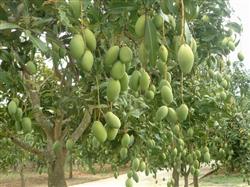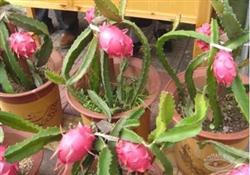How to control longicorn beetles by planting mango?

How to prevent and cure the longicorn beetle by planting mango? Please introduce the method: The longicorn beetle belongs to Coleoptera, Cerambycidae, and occurs in mango producing areas in southern China. By eating branches with larvae, the growth of the injured plants is weakened, and when it is serious, it can cause death, and the injured branches are easily broken by wind. The insect has one generation per year and overwinters mainly as larvae, but a few pupae or adults can also overwinter in the tunnel. From March to April of the following year, adults begin to drill holes, and after mating, females lay eggs in gaps of young shoots, leaf axils of old leaves or bifurcations of branches. From April to May, larvae hatch into larvae, which drill into the pith of branches after hatching; they eat from top to bottom, and every 30 cm or so of the pore hole is opened with a hole for ventilation and excretion. According to the life habit and damage characteristics of the longicorn beetle, the comprehensive control measures of the longicorn beetle are as follows: First, in winter, when the garden is cleared, the damaged branches are cut off and burned. Second, black light is used to trap and kill adults during their emergence, or artificial capture is carried out when adults mate. Third, cotton balls stained with 80% dichlorvos emulsifiable concentrate, 40% dimethoate emulsifiable concentrate 5~10 times liquid, plug the holes, and then seal the orifices with clay to poison larvae. Click for more mango growing techniques Click for more fruit growing techniques
- Prev

How to control powdery mildew by planting mango?
How to control powdery mildew by planting mango? Powdery mildew is an important disease of mango at flowering stage, which harms inflorescences, young fruits and tender leaves. It occurs in Guangdong, Hainan, Yunnan, Guangxi and other producing areas in China. Foreign countries such as India, Pakistan, Brazil, South Africa, Australia, Sri Lanka and so on have also reported.
- Next

How to plant dragon fruit in pot?
How to plant dragon fruit in pot? Please introduce potted pitaya, it is best to choose cuttings, as long as the seedlings have roots and send out new branches, they can be transferred to the pot. First of all, put two pieces of mud tiles staggered on top of the hole at the bottom of the basin, and then put a layer of pebbles or large grains of coarse sand 3-5 cm thick at the bottom of the basin as a drainage layer. Put it in again.
Related
- Moge, come on! The staff of the peasant association in the producing area of cantaloupe were frightened when the crowd gathered.
- Causes and Solutions of low Fruit setting rate of Apple
- Symptoms and control measures of passion fruit virus disease
- Fruit growing lesson: how do apple orchards keep high yields?
- Can you build orchards in the mountains? What are the pros and cons?
- How to manage the coloring period of Crisson grape?
- This paper introduces the processing technology of two kinds of fig products.
- How much is a month for retired teachers in rural areas by 2020?
- How can strawberry planting increase sugar content? We should pay attention to management in many aspects.
- What are the cultivation techniques on how to improve the yield of golden fruit?

